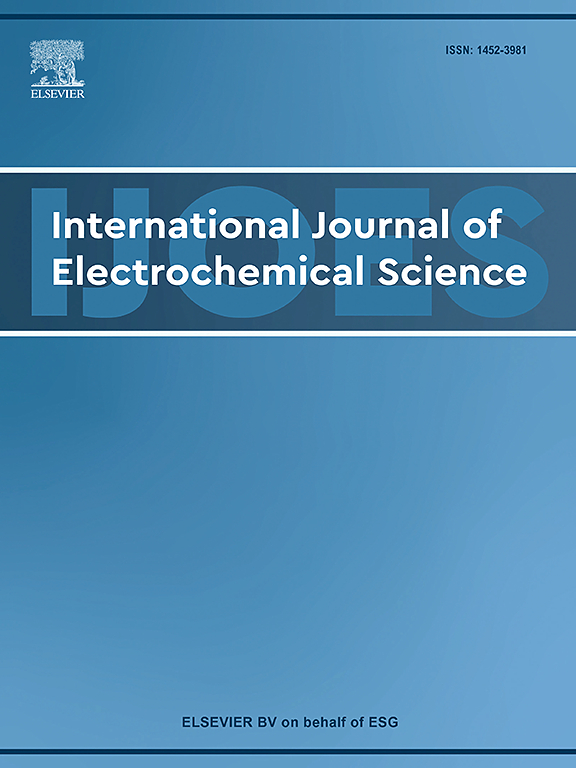电化学抛光提高激光粉末床熔敷哈氏合金X内表面质量的研究
IF 2.4
4区 化学
Q4 ELECTROCHEMISTRY
International Journal of Electrochemical Science
Pub Date : 2025-10-16
DOI:10.1016/j.ijoes.2025.101213
引用次数: 0
摘要
尽管激光粉末床熔合(LPBF)在形成复杂结构方面具有显著的优势,但其在精密工程中的应用受到表面质量差的严重制约。本研究旨在通过电化学抛光(ECP)提高lpbf制备的哈氏合金X的表面质量,电化学抛光采用环保型nacl -水溶液和nacl -乙二醇(NaCl-EG)电解质。实验研究了电解液组成和电流密度对电化学溶解行为的影响。通过综合评估表面粗糙度、材料去除率(MRR)和厚度减少,优化了ECP参数。结果表明:在NaCl-EG电解液中形成过饱和盐膜可以抑制碳化物和基体的不均匀溶解,但对粗糙度的改善有限;与NaCl-EG电解质相比,nacl -水溶液电解质的表面粗糙度相当,但MRR至少提高了336.21 %。此外,针对LPBF零件内腔表面的抛光难题,提出了一种保形工具电极设计策略。通过这种方法,成功地去除了弯曲通道内表面部分熔化的颗粒,使表面粗糙度Sa从7.16 ~ 11.91 μm降低到1.63 ~ 1.95 μm。这扩大了ECP在抛光LPBF组件复杂内部通道方面的应用潜力。本文章由计算机程序翻译,如有差异,请以英文原文为准。
Study on improving the inner surface quality of laser powder bed fusion-fabricated Hastelloy X by electrochemical polishing
Although laser powder bed fusion (LPBF) exhibits significant advantages in forming complex structures, its application in precision engineering is severely constrained by poor surface quality. This study aims to enhance the surface quality of LPBF-fabricated Hastelloy X through electrochemical polishing (ECP) using eco-friendly NaCl-aqueous and NaCl-ethylene glycol (NaCl-EG) electrolytes. The effects of electrolyte composition and current density on electrochemical dissolution behavior were experimentally investigated. ECP parameters were optimized through a comprehensive evaluation of surface roughness, material removal rate (MRR), and thickness reduction. The results indicate that the formation of a supersaturated salt film in the NaCl-EG electrolyte can suppress the uneven dissolution of carbides and matrix, but its improvement on roughness is limited. Compared with the NaCl-EG electrolyte, the NaCl-aqueous electrolyte achieves comparable surface roughness while increasing the MRR by at least 336.21 %. Furthermore, to address the challenge of polishing internal cavity surfaces of LPBF parts, a conformal tool electrode design strategy is proposed. Through this approach, partially melted particles on the inner surface of curved channels were successfully removed, reducing the surface roughness Sa from 7.16 to 11.91 μm to 1.63–1.95 μm. This extends the application potential of ECP for polishing complex internal channels in LPBF components.
求助全文
通过发布文献求助,成功后即可免费获取论文全文。
去求助
来源期刊
CiteScore
3.00
自引率
20.00%
发文量
714
审稿时长
2.6 months
期刊介绍:
International Journal of Electrochemical Science is a peer-reviewed, open access journal that publishes original research articles, short communications as well as review articles in all areas of electrochemistry: Scope - Theoretical and Computational Electrochemistry - Processes on Electrodes - Electroanalytical Chemistry and Sensor Science - Corrosion - Electrochemical Energy Conversion and Storage - Electrochemical Engineering - Coatings - Electrochemical Synthesis - Bioelectrochemistry - Molecular Electrochemistry

 求助内容:
求助内容: 应助结果提醒方式:
应助结果提醒方式:


